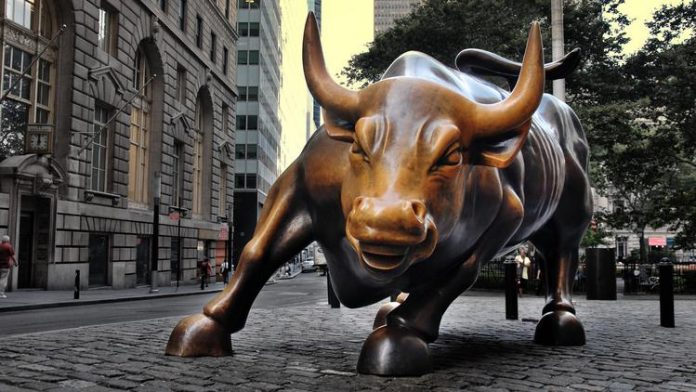Stocks advanced today as the S&P attempted to break its five-day skid. The Dow, S&P, and Nasdaq Composite all traded higher through noon on a worse-than-expected jobless claims report.
First-time unemployment filers in the US climbed to 230,000 for the week ending December 3rd, rising from 226,000 in the week prior. Continuing claims rose, too, signaling that US labor could finally be cooling.
“A notable increase in jobless claims is evident compared to the cyclical lows last spring,” explained Jim Baird, Plante Moran Financial Advisors CIO.
“Jobless claims had dipped to a meager 166,000 last March before edging higher in the following months. The sustained increase since early this year is material, even if the more recent uptick has been limited.”
LPL Financial’s chief global strategist, Quincy Krosby, pointed to the jobless claims data as a source of bullishness also.
“We had a strong selloff over the last few days and it doesn’t take much to create even the underpinnings for a modest rally,” Krosby said.
“Again, we’re back to bad news being good news.”
Morgan Stanley’s Mike Loewengart had the best take of the morning, though.
“It’s interesting to see jobless claims rising slightly, but in all likelihood this won’t move the market needle too much,” Loewengart wrote. “Investors will have a lot to digest these next few days as they get a clearer picture of where we stand in the fight against inflation before the Fed decision.”
He’s absolutely right. Next week is going to be a doozy for investors. Tomorrow, the November Producer Price Index (PPI) will be released. Next week, the market will receive both the November Consumer Price Index (CPI) and the Fed’s December rate hike in back-to-back sessions.
If either the CPI or PPI comes in hotter than expected, stocks should fall in response. Yes, the market is in “good news is bad news” territory, but it doesn’t want the news to be overly bad. The 2-year/10-year Treasury yield spread, which is deeply inverted, has been screaming for a recession for several months at this point.
“The market is largely expecting the slowdown in rate hikes to begin next week, but whether the pivot will be enough to steer the economy into a soft [economic] landing remains the question,” Loewengart added in his morning commentary.
But it’s not just the 2-year/10-year that’s inverted. The 3-month/10-year Treasury yield curve is in the red as well. ARK Invest founder Cathie Wood, whose tech ETFs have taken a beating this year, pointed to the 3m/10y inversion as proof that the Fed is making a “serious mistake” with its rate hikes.
Wood is sort of correct here in that, yes, the market is very uncomfortable with rates going up. But that doesn’t mean the Fed is wrong to raise rates. Since 2008, the market has never liked any period of tightening.
What’s wrong about the whole situation is that investors expect big rate cuts when the Fed eventually pivots. That’s causing longer-term rates to dip below short-term rates, thus easing financial conditions in the US. And the Fed wants conditions tight, not loose, as it battles inflation.
Conversely, if the Fed stopped hiking like Wood wants, short-term and long-term yields would both plummet, leaving inflation to drift higher.
Simply put, the Fed’s not really in a position to halt inflation in a meaningful way long-term. At least what Powell & Co. are doing now provides trend-following traders with some excitement. And, depending on how next week goes, traders may have a new major trend to follow, too.







